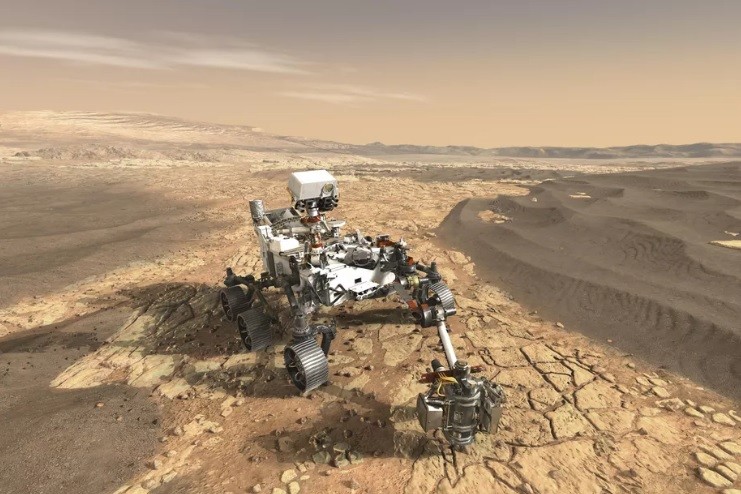Curiosity rover fires millionth laser shot
- September 9, 2024
- 0
The ChemCam instrument, developed at Los Alamos National Laboratory, recently fired its laser for the millionth time at Mars. ChemCam installed on the rover Curiosity He’s from NASA
The ChemCam instrument, developed at Los Alamos National Laboratory, recently fired its laser for the millionth time at Mars. ChemCam installed on the rover Curiosity He’s from NASA

The ChemCam instrument, developed at Los Alamos National Laboratory, recently fired its laser for the millionth time at Mars. ChemCam installed on the rover Curiosity He’s from NASA and has been helping make scientific discoveries since 2012.
Chemistry Camera It uses a laser ablation technique to destroy the rock, creating a plasma, and then collecting the light emitted by this plasma. Based on the spectrum of the light received, it is possible to determine what elements are present in the vaporized rock on the planet’s surface. The main goal of the research is to determine whether life could have existed on Mars in the past.
Each laser pulse produces a complex spectrum that provides a wealth of geochemical information. Scientists have collected a million such spectra, and the device continues to operate.
Collective Chemistry Camera The device has operated for more than 12 years 55 million kilometers from its maintenance base, a significant technical achievement. The U.S. Department of Energy’s Los Alamos National Laboratory announced the jubilee launch.
The research team made several important discoveries through the study. Chemistry Camera Since 2012. In 2016, manganese oxides were discovered, indicating that there may be more oxygen in the Martian atmosphere. This discovery complemented other results of the mission Curiosity and showed how similar the Red Planet was to Earth in the past.
In 2017 Chemistry Camera First to record the presence of boron in Gale Crater salts. Boron plays a unique role in pre-biological chemistry, supporting RNA formation.
In 2019, the device helped discover that the Martian surface was once covered with small bodies of saltwater that periodically dried up and filled up again. Analysis of salt-rich rocks in Gale Crater revealed that the Martian climate was much less stable than previously thought, with periods of extreme humidity alternating with dry spells.
Chemistry Camera It conducted the first analysis of the Glen Torridon region in Gale Crater and found that the bedrock in the area was altered by groundwater in the planet’s early history. Curiosity He discovered elemental sulfur, the first instance of finding this mineral in its pure form on Mars.
Mars rover mission Curiosity It was calculated for two years – 2012-2013. However, more than 12 years have passed and it still continues to explore Mars and collect data. Chemistry Camera It will continue to operate as long as the rover itself is functional.
Source: Port Altele
As an experienced journalist and author, Mary has been reporting on the latest news and trends for over 5 years. With a passion for uncovering the stories behind the headlines, Mary has earned a reputation as a trusted voice in the world of journalism. Her writing style is insightful, engaging and thought-provoking, as she takes a deep dive into the most pressing issues of our time.